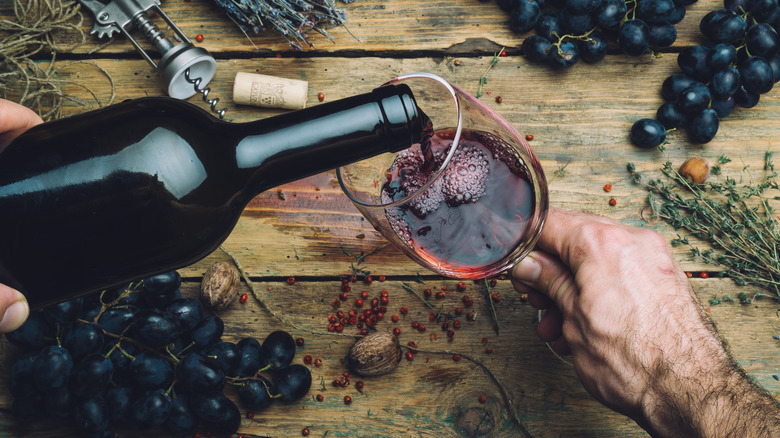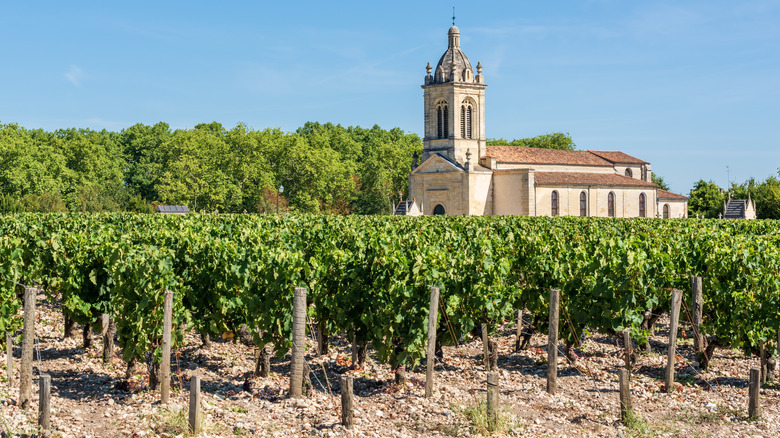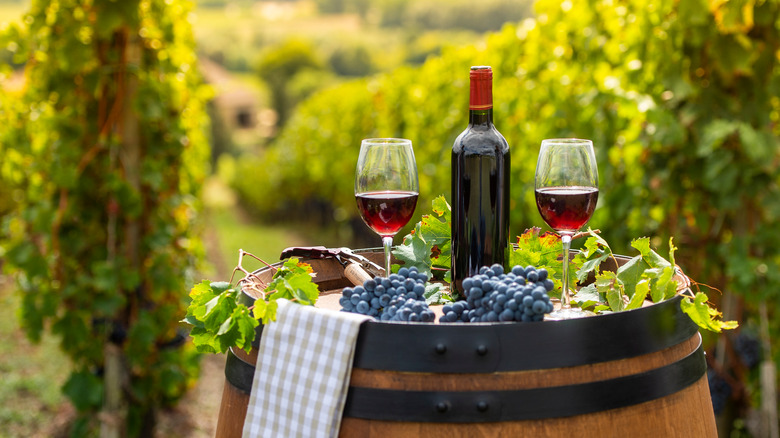Napoleon's Prized French Wines Are Still Breaking Banks Today
In 1855, Napoleon III threw the Exposition Universelle de Paris on the Champs-Élysées to showcase French industry, including innovation, art, weaponry, and agriculture. After the rousing success of London's Great Exhibition of 1851, the new Emperor of France was eager to bring attention — and money — to his domain. As part of the six-month-long event, Napoleon requested an exhibit where the country's wines would be represented and a list of superior French wines would be featured.
An organization of wine merchants known as the Syndicat of Courtiers came up with the now famous list, which included wine from 58 producers — known as châteaus. The list was then broken up into five different tiers, or growths — four first-growths, 12 seconds, 14 thirds, 11 fourths, and 17 fifths.
Since that time, only one formal revision has ever been made. In 1973, after 50 years of trying, Baron Philippe de Rothschild managed to have Château Mouton elevated from second-growth to first-growth status. To this day, wine from the châteaus on the list — representing just 5% of the overall production in Bordeaux — are considered to be among the best wines in the world, each carrying a hefty price tag.
What's behind Bordeaux classifications
Since the Syndicat were not drinkers or growers, but rather brokers of wine, they simply classified the wine based on price. After some intense criticism, the Chamber of Commerce instead listed them by class (also known as growths or crus) in alphabetical order. Price ranking was relatively new at the time. Before this, Bordeaux was classified by the region's terroir — a term used to describe environmental factors, like minerals, soil, climate, and even farming practices that affect the taste of the wine. Terroir was similarly dismissed when the Syndicat classified châteaus and not individual vineyards, as was, and still is, custom in other wine regions, like Burgundy. This means the grapes in any given wine on the list can come from any region or vineyard within Bordeaux, but the classification belongs to the château who produced the finished bottle.
Though the 1855 list claimed to classify all Bordeaux wine, it dealt almost exclusively with wine producers from the Haut-Médoc, the subregion further upstream within the Médoc. Graves boasted a much longer wine-making history than Médoc, while St-Emilion and Fronsac were highly regarded regions at the time, primarily for their Cheval-Blanc and Canon, respectively. It is believed, however, that the 18th-century revolution in wine quality began in Médoc and was most influenced by the region. Some experts think that this was why almost all wines on the 1855 classification came from Médoc.
Bordeaux wines today
Many consumers equate the 1855 pecking order with what will taste the best today. Some experts believe the quality remains in these bottles because the ranking and high price are enough for the winemakers to focus on producing a high-caliber wine. Others have spoken out and say these châteaus don't actually make the best wine at all. Experts agree that the second through fifth growth châteaus are largely muddled in terms of their quality rankings. Blind tastings also don't support the premier grand cru classé, or first growth wines, being classified at the top.
In 1855, there was a large price gap between the first and second growths. According to price estimates from Wine Searcher, we see that the price gap between the premier grand cru classé and the deuxieme grand cru classé is still prominent today. Bottles from châteaus in the first growth average $808 per bottle, while those from the second growth average $182 per bottle. Today, wines from the first growth are almost exclusively purchased and drunk by the wealthy (a bottle of Château Haute-Brion even landed on the hit show Succession). So if you have a desire to taste one of Napoleon's prized wines, be sure you bring some extra cash!



